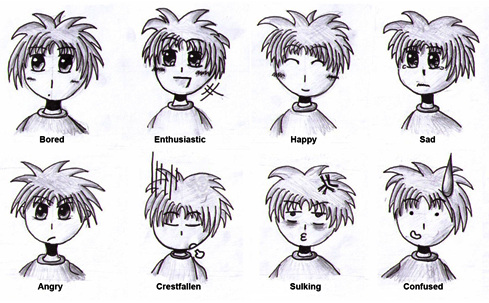It’s the teacher job to control a class and to ensure that learning can take place. Backing away, or deferring to a higher authority is not a first step, as personal authority is immediately diminished.
Teacher status.
The children have to acknowledge their teacher. A truism; but status matters. Working with ITT students, I’ll always advise them to “be a teacher”, show confidence, ensure preparation is done, collect resources, “know their stuff” and be able to show by deeds that they are efficient and effective and can produce good lessons.
“I like my teacher. I like what we do.” Probably a good starting point.
All communities of people need some kind of rule system and schools and classrooms are no exception. It’s easy to create a list of rules. “You will not, should not, must not……” Rules and laws are often written in the negative, with sanctions if broken.
There have to be consequences to actions, otherwise anarchy reigns. However, schools are also human and humane systems, designed to enhance learning, so might need rules that can appear slightly less draconian than civil laws, although at all times, we have to recognise that the rule of law is overarching and sometimes impinges on school life.
I managed to run a school with three principle rules:-
Be responsible for yourself.
Be responsible for the way you treat others.
Be responsible for our environment.
It worked, because virtually every “thou shalt not..” rule can be incorporated and discussed, with children understanding consequences of actions. It did away with “It’s not fair”, for the majority.
Making the school a place that children wanted to attend was an essential component.
Rules should apply equally to staff and children. An example would be “No eating x at playtime.” Children seeing teachers doing that will see it as unfair.
Purpose..
A classroom is a place of learning. That’s easy to state, as a teacher, but we have to accept that while we are employed to be there, children are required to be there, even when they’d rather be elsewhere. It’s worth reflecting on adult behaviour in similar situations. It’s possible to see the daydreamers, the “sleepers”, the slightly bored, the fiddlers, doodlers, all giving behaviour signals that would be seen as negative in a classroom.
I doodle when listening. Some would say a bad habit, but for me that aids concentration and as an adult, I am allowed to do it. Yet teachers will tell children off for doing the same. Ever found yourself telling off a child for behaviours that you exhibit? Don’t do as I do, do as I say?
Lessons need a clear purpose. Learning objectives, aims are not new. The Nuffield Science 5-13 science series had a separate booklet entitled “With objectives in mind”. Lessons have always had to have a purpose. If the lesson outline is shared with children at the outset, they can see what they are working towards and why they are doing the different elements. This approach especially helps some boys to put together the bits.
So you have purpose, now look at the detail. The introduction is the teacher responsibility. The script is in our hands, coupled with resources to exemplify, explore and extend from known beginnings and now, with easy access to ICT, potentially limitless resources from around the world to enhance engagement. This part is essentially saying, “Here’s something you may not know.”
Hands up or not?
An inspector once described the act of asking for hands up as “the tyranny of the hands” and in many ways he was right. The willing, confident and able learners will sometimes go out of their way to ensure that they are noticed and have their right to a say. In the process, they put pressure on less confident or less able children, who can become a silent, passive group. As a class teacher, I found it relatively easy just to ask the child whose views I wanted to respond. No hands up means all can be asked, so all can think. Hands up can be accompanied by sound or shouting out, so diminishing the learning environment.
Coupled with a partner for discussion, often ideas are far better that the immediate responses.
If a methodology for selection is needed, lolly sticks or pegs with names can be selected at random.
Tasking learning
To get the tasks absolutely right all of the time is tough. However, an astute teacher is likely to be aware if the task might have some leeway and will be looking for the signs of distraction, facial expressions showing concern or possibly that the tasks are easy, and will take appropriate action.
However, tasking is the bread and butter of learning, as the task seeks to promote an extension of learning, challenging children to secure current knowledge and applying this in new situations.
Learning environment. Dependency or independence?
How the classroom is arranged will have a bearing on class behaviour. Is there too much furniture? Is it so close together that movement is almost impossible? Does the furniture arrangement support the learning or limit what is possible?
Are resources labelled and easy to access and put away tidily? Do the children know where everything is, or do they have to continually ask, causing disruption in the process?
Do all questions have to pass through the teacher, or are the learners independent in their ability to self-direct, self-select and make decisions? The dependent child will interrupt or might sit passively waiting for direction. Independence supports learning. Three and four year olds can be independent.
Are there systems in your class which might be adapted to support more independent approaches?
Engagement, questioning and feedback/ supporting learning.
The adults in a classroom need to be regularly scanning for the signs of problems and engaging with them, even when they might be teaching a specific group. As a teacher, you can’t run away from T&L nor from the consequent behaviours arising. Noise levels, on/off task behaviour, inappropriate use of resources can all have a detrimental impact on the classroom ethos. They all need to be patrolled and controlled to ensure learning can happen.




 RSS Feed
RSS Feed
